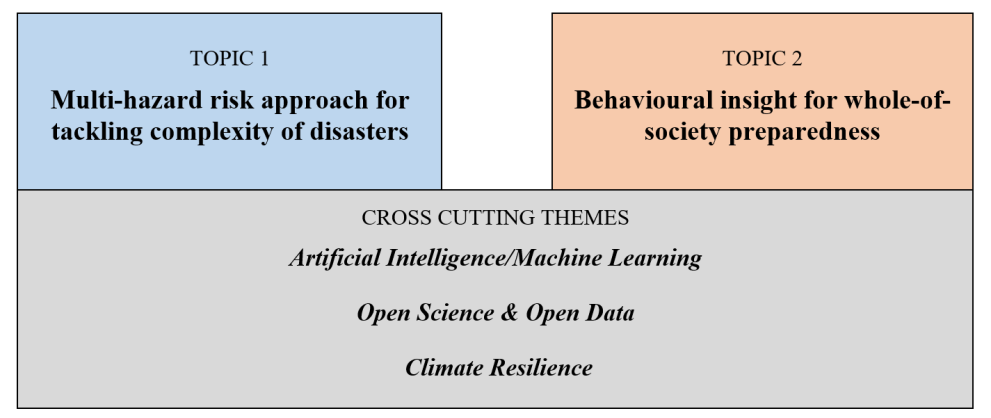Aimed at leveraging scientific and technical partnerships inside and outside the Commission, the UCPM Knowledge Series is taking place under the umbrella of DRM Science and Planning in Disaster Risk Management (DRM & SP) Working Group. Following consultation with UCPM Member and Participating States, a work plan has been developed which outlines the priority areas and cross-cutting themes for the continued focus of the working group. The events and other outputs of the UCPM Knowledge Series aim to support the two work strands identified in the work plan and support the further development of the priority areas.
Priority Areas
Two priority areas for the working group were identified:
1) Multi-hazard risk approach for tackling complexity of disasters
The complexity of disasters is characterised by an intricate interplay of various impacts which may include cross-border cascading effects, a combination of multiple hazards, a societal dimension such as conflict. Understanding key components of compound disasters requiresmoving from single hazard to multi-hazard risk approaches. There is a need to better understand the interactions between hazards which may happen simultaneously or consecutively and their potential cumulative and cascading effects and impacts to strengthen preparedness and response measures.

2) Behavioral insight for whole-of-society of preparedness
From risk awareness and communication to early warning and evacuation, there is an increasing need to further integrate behavioural information of citizens in the design and evaluation of disaster risk management initiatives. Considering different levels of behavioural causes, such as individual, social, cultural, and contextual factors, it is now recognised as essential to create effective disaster risk management strategies. Inputting research on societal resilience will be especially beneficial to preparEU, one of flagship initiatives of the DRGs.
Cross-cutting themes
Furthermore, Artificial Intelligence and Machine Learning, Open Science and Open Data as well as Climate Resilience have been identified as cross-cutting themes. These themes shall act as drivers for the above mentined priority topics, for example, by enabling faster and more accurate decision-making, increasing the “resolution” of transparently available risk information.